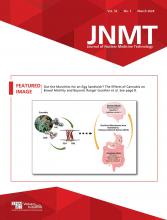Abstract
Total-body PET/CT allows simultaneous acquisition of all the body parts in a single bed position during the radiotracer uptake phase. Dynamic imaging protocols employing total-body PET could demonstrate findings that may not have been previously visualized or described using conventional PET/CT scanners. We examined the characteristics of blanching defects, areas of markedly reduced (partial defect) or absent (complete defect) radiotracer uptake seen at the skin/subcutaneous tissues opposite the bony prominences at pressure points. Methods: In this observational study, 77 participants underwent dynamic total-body PET/CT imaging using 18F-FDG (Group 1, N = 47, 60-min dynamic, arms-down, divided into 3 subgroups according to the injected dose) or 18F-fluciclovine (Group 2, N = 30, 25-min dynamic, arms above the head). 40 out of 47 participants in Group 1 were re-imaged at 90 min after being allowed off the scanning table. Blanching defects, partial or complete, were characterized opposite the bony prominences at 7 pressure points (the skull, scapula, and calcaneus bilaterally, as well as the sacrum). Association of the blanching defects with different clinical and technical characteristics were analyzed using uni- and multi-variate analyses. Results: A total of 124 blanching defects were seen in 68 out of 77 (88%) participants at one or more pressure points. Blanching defects were higher, on average, in Group 2 participants (3.5±1.7) compared to Group 1 (2.1±1.4; P <0.001), but it did not vary within Group 1 for different 18F-FDG dose subgroups. All defects resumed normal pattern on delayed static (90-min) images except for 14 partial defects. No complete blanching defects were seen on the 90-min images. By multivariate analysis, arm positioning above the head was associated with skull defects; scapular and sacral defects were significantly more encountered in men and with lower BMI, while calcaneal defects could not be associated to any factor. Conclusion: Blanching defects opposite the bony pressure points are common on dynamic total-body PET/CT images using different radiopharmaceuticals and injection doses. Their appearance should not be immediately interpreted as an abnormality. The current findings warrant further exploration in a prospective setting and may be utilized to study various mechano-pathologic conditions, such as pressure ulcers.







